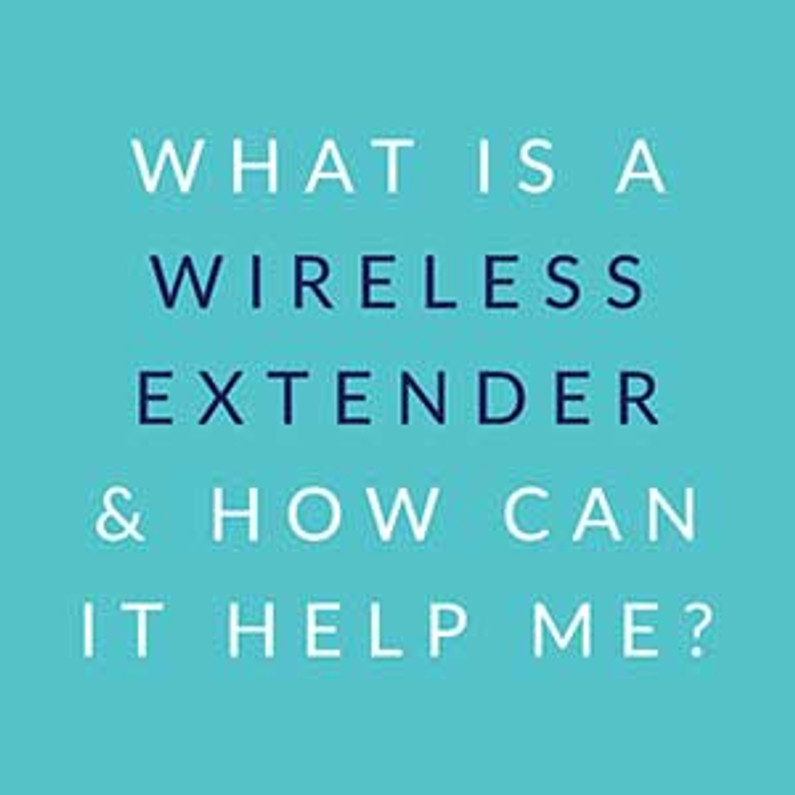What is a Wireless Extender and How Can It Help Me?
Working in tech support, I can say that one of the most common questions I hear is “How can I increase the wireless range in my house?” There are multiple ways to do this, but the easiest and often most cost effective way is to add a wireless extender to your network. A wireless extender is sometimes called a “booster” or “Range Extender” and the main function of the device is to “extend” your wireless network range and in some cases dead spots in the house.
The wireless extender has some uses that are ideal and then some that will not work with this setup.
- Here are a few examples of networks that the wireless extender would help:
- A large home or business that has a main router located in an area that will not reach certain areas of the space.
- Allows devices that are not wireless compatible, to connect to the ethernet ports on the extender.
- Extends your wireless coverage to a pool house or garage area.
- In some cases, you can reach a basement or attic space. (This depends on the structure of the walls and cabling in them.
- Here are a few examples of configurations that the wireless extender cannot provide
- Daisy-chaining wireless extenders does not work well in most networks. This can cause network problems and wireless interference. You can only connect the wireless extenders to the main router.
- Wireless extenders cannot increase your download or upload speed from your Internet Service provider. This device can only provide a wider area of wireless coverage.
- The wireless extender has to be set up on the network, the device cannot just connect to any wireless network that is available.
There are many different WiFi extender brands and models and they fit most budgets big and small. There are a couple of things you want to consider before you decide how much you want to spend and which model fits your needs.
The first thing to do is check your router for the model number. Look for something that says for instance Linksys AC1900. When you find this number this is a great way to determine which extender will work for you. This means your router can broadcast up to 1,900 Mbps wirelessly, split between the 2 or 3 wireless radios (depending on the router). This is normally split in 2 wireless radios on the 802.11AC and 802.11N wireless radios. The higher the AC number on the wireless extender the faster the transmit rate. Some devices have more antennas than others to let your beam your wireless signal in a different area. Lastly, you may want to have an extender to have extra ethernet ports to allow devices that are non-wireless to connect to that device and still be on the network.
Once you have chosen and purchased your wireless extender, you are ready to install this to the network. Read through the instructions carefully as each Wireless extender will differ in setup. Most devices have 2 ways to connect.
Option 1 is the WPS setup (Wi-Fi Protected Setup) which is not very secure, and we do not recommend using this method. In fact, we recommend disabling WPS on your router. However, with this option you hold the WPS button down on the router for a few seconds and then press a button on the wireless extender. This will allow them to sync with each other. WPS allows you to connect to a network without a password with the push of a button. This will ABSOLUTELY leave your network unsecured during this time. This function is not available in all routers. Because it is unsecure, we have removed this option in any router with our Sabai OS firmware.
Option 2 is the manual method. This method is the recommended method for security purposes. You connect the wireless extender into the wall and then power on the device. Then find the SSID (Wireless name) of the extender on your computer and connect to that with the password provided in the instruction manual of the device.
Once you have connected to the wireless network, open a web browser and enter the IP address or website listed to access the admin panel of the device. This will prompt you through a wizard system that will assist you in setting the Sabai VPN Router (or other router) wireless SSID to the extender. After you are finished just click save and you are all set!
You can purchase a TP-Link extender that works great with all Sabai OS products here.
Recent Posts
-
What You Need to Know to Donate Safely Online
Cybersecurity has become an increasingly critical issue in the digital age. For instance, in 2016, m …Mar 10th 2022 -
What is a Default Gateway?
A default gateway is where all your internet traffic goes first before leaving your network. That’s …Jan 4th 2022 -
Essential Cybersecurity Tools Every Business Needs
IT infrastructures across organizations are now more complex than ever. Given the increasing number …Nov 29th 2021




